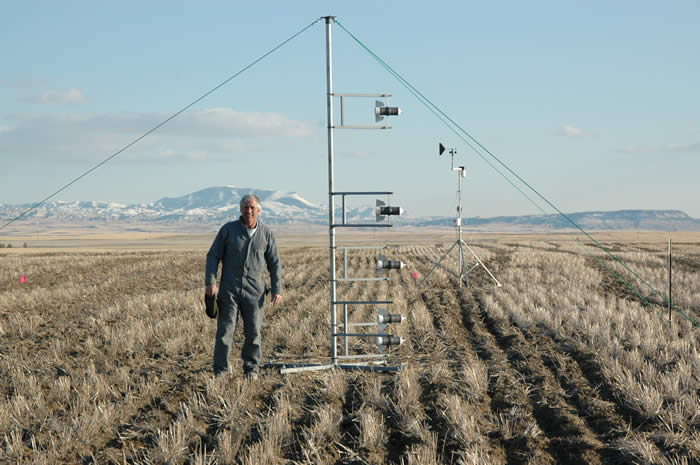Ammonia Volatilization and Urea Fertilizer
A micrometeorological study to quantify volatilization losses of ammonia from surface urea applications to no-till wheat
In Montana, farmers often fertilize wheat by applying urea to the soil surface during the fall, winter, or early spring. The question of how much nitrogen is lost from this application strategy seems to be raised by growers and fertilizer dealers every season. Surface urea applications are known to be susceptible to nitrogen losses as a result of ammonia volatilization (lost to the air). Until Dr. Rick Engel began his studies in 2008, it was assumed these losses were minimal when urea was applied to cold soil. He used a micrometeorological system referred to as the integrated horizontal flux method (pictured in photograph below) to quantify ammonia losses from urea. This method is widely recognized as providing the most accurate measures of gas losses from soils. It is not disruptive of the soil environment and provides for continuous collection of ammonia gas over time. This is a first of its kind study in Montana. From 2008 to 2015 Dr. Engel conducted over 20 field trials at six different farms in Montana. This website presents study details and major findings.
Presentations
- August 6, 2009 - CCA and Dealer Training, Huntley, Montana
- December 8, 2010 - N Conference, Havre, Montana
- March 2, 2011 - Denton, Montana
- Ammonia Volatilization: Process, Contributing Factors, Effect on Yield and Protein, Management to Minimize, 2017
For additional presentations on urea volatilization, including management to minimize N loss, browse "Presentations" on the Soil Fertility Extension Website

